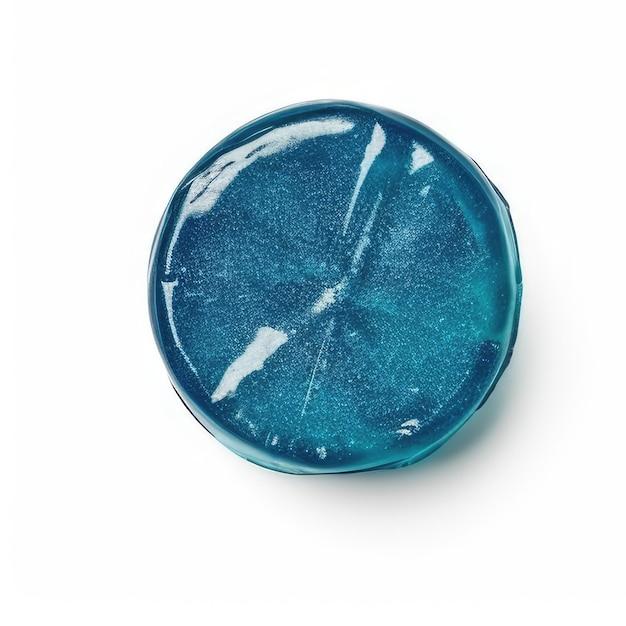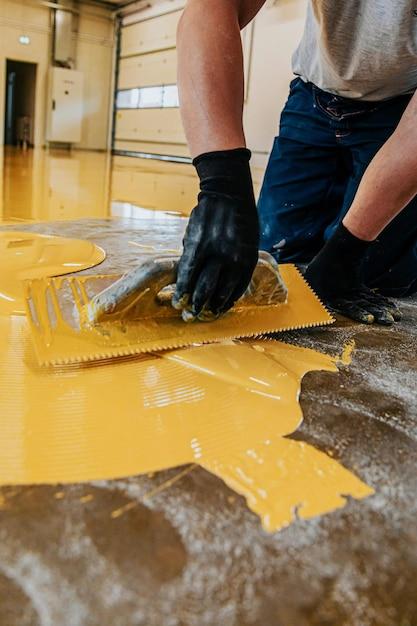When it comes to working with epoxy, one of the most common questions that arises is how long it should cure before sanding. Whether you’re using epoxy for tumbler art, floor coatings, or other projects, understanding the curing process is crucial for achieving the best results. In this blog post, we’ll delve into this topic and provide you with all the information you need to know.
From the time it’s mixed, epoxy goes through several stages of curing, and each stage has its own recommended waiting time before you can move on to the next step. Sanding is a crucial part of the process that helps achieve a smooth and even surface. But jumping the gun and sanding too soon can lead to less-than-desirable outcomes. So, how long should you wait? We’ll cover that and more in the following paragraphs, clearing up any doubts you may have along the way.
So, if you’re eager to learn about the optimal curing time before sanding epoxy, keep reading!
How Long Should Epoxy Cure Before Sanding
Epoxy has become a popular choice for various DIY projects and professional applications due to its durability and versatility. Whether you’re creating stunning resin art or coating your garage floor, epoxy requires proper curing before it’s ready for sanding. Let’s explore how long epoxy should cure before sanding to ensure the best results for your project.
The Importance of Proper Epoxy Curing
Before we dive into the timeframe for epoxy curing, it’s crucial to understand why it’s important to let the epoxy cure properly. Epoxy curing is the process of the resin and hardener chemically reacting to form a hardened, durable surface. Skipping or rushing this step can result in several issues, such as improper adhesion, a sticky finish, or premature wear and tear.
Factors Affecting Epoxy Curing Time
The curing time of epoxy can vary based on several factors, including temperature, humidity, epoxy type, and the specific brand or product you’re using. It’s essential to familiarize yourself with the manufacturer’s guidelines and recommendations, as they can provide the most accurate curing time for your epoxy.
Typical Epoxy Curing Timeframes
In general, epoxy requires at least 24 hours to cure properly before sanding. However, the curing process can continue for several days or even weeks, depending on the factors mentioned earlier. It’s crucial to exercise patience and allow ample time for the epoxy to fully harden before proceeding with sanding.
Checking Epoxy Curing Progress
To determine if your epoxy has cured sufficiently, you can perform a simple touch test. Gently press your finger against a small inconspicuous area of the epoxy surface. If it feels tacky or leaves an indentation, it’s an indication that the epoxy is not fully cured and needs more time. On the other hand, if it feels firm and doesn’t leave any marks, it’s likely ready for sanding.
Optimal Conditions for Epoxy Curing
Creating an ideal environment can help facilitate the epoxy curing process. Maintaining a temperature between 70-80°F (21-27°C) and a humidity level below 60% is generally recommended. Higher temperatures can accelerate the curing time, while lower temperatures can prolong it. Additionally, ensuring good airflow in the curing area can help expedite the process.
Patience Is Key
While it’s tempting to rush into the sanding process, exercising patience when it comes to epoxy curing is crucial. Remember, good things come to those who wait. Allowing your epoxy to cure properly will ensure a durable and long-lasting result, so take your time and resist the urge to hasten the process.
Understanding how long epoxy should cure before sanding is vital for achieving the best outcomes in your projects. Patience, following manufacturer recommendations, and creating the optimal curing environment are essential factors to consider. By giving your epoxy ample time to cure, you’ll be rewarded with a beautiful and durable finish that will last for years to come. So sit back, relax, and let your epoxy work its magic before diving into the exciting world of sanding!
FAQ: How Long Should Epoxy Cure Before Sanding 2
Epoxy is a popular choice for various projects due to its durability and glossy finish. However, it’s essential to understand the proper curing time before sanding to ensure the best results. In this FAQ-style subsection, we will address some common questions, provide valuable insights, and equip you with the knowledge you need to achieve a successful epoxy project.
Can you pour epoxy over uncured epoxy
Pouring epoxy over uncured epoxy is generally not recommended. It’s crucial to allow the initial epoxy application to cure fully before adding another layer. If you pour epoxy over uncured epoxy, it may lead to poor adhesion, uneven surfaces, or even a tacky finish.
Can you put a second coat of epoxy
Yes, you can apply a second coat of epoxy to achieve a thicker or more resilient finish. However, it’s vital to follow the specific instructions provided by the epoxy manufacturer. Make sure the first coat has cured completely and follow the recommended curing time before applying the second coat.
Do you have to sand between coats of epoxy on tumbler
Sanding between coats of epoxy on a tumbler is not always necessary, but it can help improve adhesion and ensure a smoother finish. If you notice any imperfections, such as drips, air bubbles, or rough areas, lightly sanding the surface before applying the next coat can produce better results.
Is one coat of epoxy enough
The number of epoxy coats required depends on the desired outcome and the specific project. In some cases, one coat may be sufficient to achieve the desired results. However, applying multiple thin coats of epoxy can enhance durability, depth, and protection. Consider your project’s needs and consult the epoxy manufacturer’s guidelines for the best results.
How long should epoxy dry before sanding
The curing time for epoxy before sanding can vary depending on multiple factors such as temperature and humidity. In general, epoxy needs a minimum of 24 hours to dry before sanding. However, it’s advisable to review the specific epoxy product instructions for recommended curing times, as some epoxies may require longer drying periods.
How long does it take for 5-minute epoxy to fully cure
Despite the name, 5-minute epoxy does not fully cure in just five minutes. The setting time of 5-minute epoxy refers to the time it takes for the epoxy to partially harden and become workable. However, it typically takes around 24 hours or more for 5-minute epoxy to fully cure.
What happens if you add too much hardener to epoxy
Adding too much hardener to epoxy can have adverse effects on the curing process. The chemical ratio of epoxy resin to hardener is crucial for proper curing. If you add an excessive amount of hardener, the epoxy might not cure correctly, leading to a sticky or soft finish. It’s crucial to carefully follow the manufacturer’s instructions and maintain the recommended ratio.
Why is my epoxy cloudy after sanding
Cloudiness can occur when sanding epoxy due to various reasons, such as improper mixing, insufficient curing time, or using the wrong type of sandpaper. To avoid cloudiness, ensure thorough mixing of the epoxy components, allow sufficient curing time, and use fine-grit sandpaper during the sanding process.
Will epoxy set in cold weather
Epoxy can set in cold weather, but the curing time may be significantly extended. Low temperatures can slow down the chemical reaction necessary for epoxy curing. It’s advisable to work in a temperature-controlled environment within the recommended temperature range specified by the epoxy manufacturer for optimal curing results.
Can you sand resin after 24 hours
Yes, you can typically sand resin after 24 hours, but the curing time can vary depending on the specific resin product. It’s essential to check the manufacturer’s instructions for the recommended curing time before proceeding with sanding. Additionally, using the appropriate sandpaper grit and following proper sanding techniques can help achieve the desired results.
How do you speed up epoxy cure
To speed up the epoxy cure process, you can adjust certain factors such as temperature, humidity, and epoxy formulation. Increasing the temperature within the manufacturer’s recommended range can accelerate epoxy curing. Additionally, using fast-curing epoxy products or adding an accelerator, if compatible with your epoxy, can help expedite the curing time. However, always refer to the manufacturer’s instructions for guidance on the specific epoxy product you are using.
How long until 5-minute epoxy is Sandable
While 5-minute epoxy may become workable within five minutes, it’s advisable to wait at least 24 hours before sanding. Fully curing the epoxy ensures a stronger bond and reduces the risk of uneven sanding or damage to the epoxy surface.
Can you sand epoxy between coats
Sanding epoxy between coats is not always necessary but can be beneficial for achieving a smoother finish. If you notice any imperfections, uneven surfaces, or debris in the epoxy between coats, you can lightly sand the surface before applying the next coat. This promotes better adhesion and helps achieve a more professional-looking result.
Can I use a hair dryer on resin
Using a hair dryer on resin is generally not recommended. The heat generated by a hair dryer can cause uneven curing, surface imperfections, or even bubbles in the resin. It’s best to let the resin cure naturally according to the manufacturer’s instructions for optimal results.
How long should you wait before applying a second coat of resin
The waiting time before applying a second coat of resin depends on the specific resin product and ambient conditions. In some cases, you may need to wait until the initial coat is tacky but not fully cured to achieve proper adhesion between layers. Refer to the manufacturer’s instructions for the recommended waiting time and ensure the first coat has reached the appropriate stage for optimal bonding.
How long should you wait between coats of epoxy
Waiting times between coats of epoxy can vary based on the epoxy product and environmental factors. Typically, it is recommended to wait 4-24 hours before applying the next coat. This waiting period allows the previous coat to cure partially without being fully cured, ensuring optimal chemical bonding between layers. To achieve the best results, consult the epoxy manufacturer’s guidelines for specific waiting time recommendations.
Can you put a second coat of epoxy on a garage floor
Yes, you can apply a second coat of epoxy to a garage floor. However, it’s important to follow the epoxy manufacturer’s instructions and ensure the first coat has cured fully. Clean the surface thoroughly, remove any debris, and apply the second coat according to the recommended instructions, allowing proper curing time between coats. This will help create a more resilient and visually appealing epoxy floor finish.
How do you clean epoxy after sanding
After sanding epoxy, it’s essential to remove any sanding residue or dust before applying additional coats or finishing touches. You can use a soft, lint-free cloth or a tack cloth to gently wipe the surface, ensuring all debris is removed. Avoid using water or any chemicals that may react with the epoxy. Once the surface is clean and dry, you can proceed with the next steps in your epoxy project.
With these frequently asked questions about the curing and sanding process of epoxy, you are now armed with the necessary knowledge to tackle your epoxy projects successfully. Follow the manufacturer’s instructions, exercise patience, and enjoy the journey as you create stunning epoxy creations that stand the test of time.

